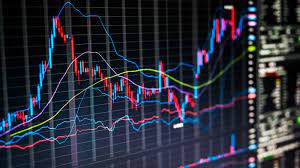Hello!
When it comes to getting your feet wet in the Forex market, one of the fundamental concepts you must grasp is liquidity. Money has absolute liquidity, and many novice traders depend on this assertion, unaware of the distinction between Forex and broker liquidity.
What does Forex liquidity mean?
 Customers convert one currency to another when it comes to Forex trading, and execution speed is critical. The market consists of millions of bid and ask transactions; nevertheless, a brokerage firm may be unable to work with liquidity providers – i.e., get access to the market’s main participants. What does liquidity provider mean?
Customers convert one currency to another when it comes to Forex trading, and execution speed is critical. The market consists of millions of bid and ask transactions; nevertheless, a brokerage firm may be unable to work with liquidity providers – i.e., get access to the market’s main participants. What does liquidity provider mean?
Consider the following scenario: a broker has 1,000 registered traders but has submitted no applications to liquidity providers. For example, an order book may include only bids and offers made by registered traders.
As a result, one user needs to purchase 100 units of GBP/JPY at the current price of 154.01232. However, the order book only has 15 units at this price. As a result, traders are forced to buy assets at a premium to the market price or risk incurring losses.
In the same scenario, how does a liquidity provider work? A broker’s order book is augmented by external bid and ask transactions. The brokerage firm acts as a middleman between two parties.
Cooperation models with liquidity providers
Brokers may work with liquidity providers (LP) in various ways; nevertheless, all of the models fall under the category of No Dealing Desk (NDD). The Dealing Desk (DD) concept transforms brokers into market makers, with no LPs involved.
 The NDD class of models comprises the following:
The NDD class of models comprises the following:
- The ECN (Electronic Communication Network). A trader receives bids and asks for offers that are automatically sent to the market and executed according to the market price. Meanwhile, price slippage is a possibility.
- DM (Direct Market Access). When a trader creates an order, they can act as both a price giver and a price taker. Brokerage firms present trades directly to liquidity providers.
- The STP (Straight-Through Processing). LPs offer bid and ask rates. When a trader places an order, brokerage firms immediately route it to liquidity providers.
Beginner traders should grasp how liquidity works and which brokerage firms to use. However, what about brokers? How can a brokerage firm locate a liquidity source that is both dependable and powerful?
Also read:
- Newest Innovation in Shipping Tech: Ditch Your Printer
- Top 5 Technology Priorities for Enterprises Preparing for Economic Slowdown
- 12 Techniques to Do SEO for Accountants
Useful tips for brokers looking for liquidity providers
There are many liquidity providers, and selecting the right one may be difficult.
 However, consider the following critical points:
However, consider the following critical points:
- Deal only with “Tier-1” limited partnerships, which link brokers to the biggest banks and financial institutions.
- Choose global businesses that offer a range of services. Additionally, it is preferable to work with suppliers that provide a variety of additional efficient options (for instance, White Label trading platforms).
- Apply to LPs that offer superior customer service and are prepared to exceed your expectations.
In terms of the worldwide market, B2Broker is one of the most exemplary definitions of what does liquidity provider mean. The business is always on the lookout for the most innovative and advantageous solutions for brokers.
Thank you!
Subscribe to our newsletter! Join us on social networks!
See you!






